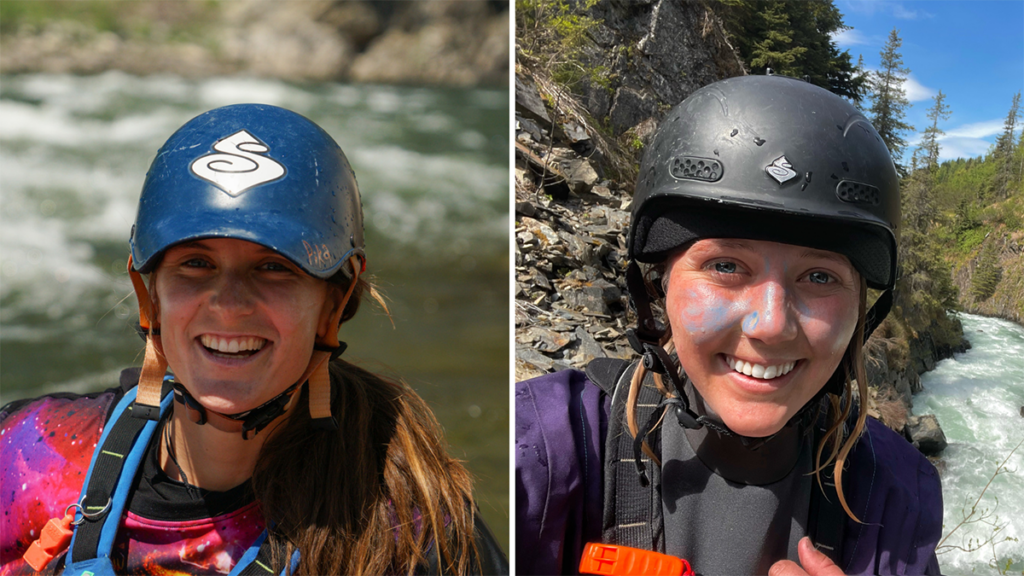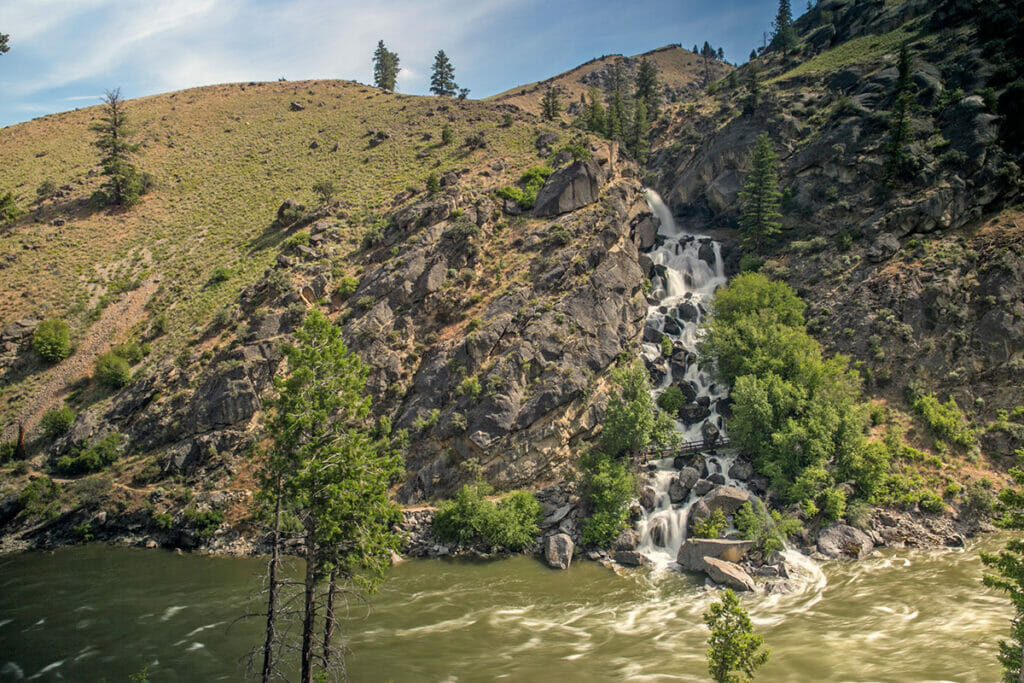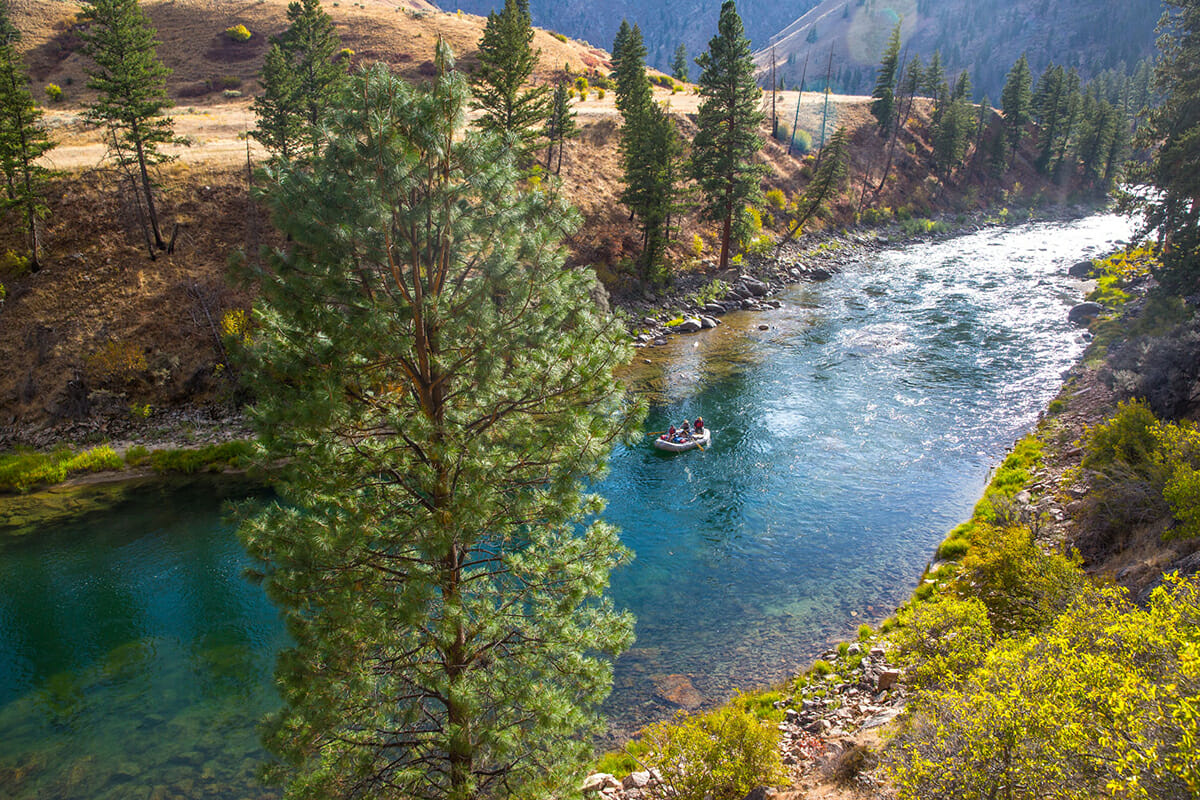Libby Tobey and Hailey Thompson are embarking on an incredible trip this summer along with three other athletes and advocates. The women are skiing and paddling over 1,000 miles from central Idaho to the Pacific Ocean as part of a public awareness and advocacy initiative, the “Grand Salmon Source to Sea” project, which aims to bring attention to declining wild salmon and steelhead populations in the Snake River Basin.
The project is especially timely as decision makers deliberate the future for the four lower Snake River dams and our critical native fish species.

The women will begin their journey by ski-touring into remote Idaho wilderness to reach the headwaters of the South, Middle, and main Salmon River. They will continue downstream in whitewater kayaks, following the natural migration path of anadromous fish from the rivers of central Idaho to the Pacific Ocean. Transitioning to sea kayaks, they will attempt to portage the four dams on the Lower Snake River and a further four on the Columbia River before reaching the Pacific Ocean near Astoria, Oregon.
The trip will take an estimated 80 days to complete.
Tobey, an environmental educator and river guide, and Thompson, a fisheries biologist and artist, sat down with Trout Unlimited to talk about breaching the dams, their connection to the project, and the remarkable journey taking place this summer. Below is an excerpt from the interview, edited for clarity and length.
TU: Why take on the Source to Sea project and why now?
Libby: We have a unique window of opportunity right now. There is political momentum building behind the breaching of the lower four Snake River dams. We believe this project can make an impact and can be more than just a paddling trip for the sake of a paddling trip. This is a remarkable opportunity to leverage the sport that we all love deeply as a tool to affect an incredible conservation outcome.
And we’ve talked about this—whitewater is a bit of a spectacle. Many people see whitewater kayaking and they’re sort of like, whoa, what is that? What are you doing? Why are you going down those rapids in that small, silly plastic thing? It’s just fascinating to the public eye.
All of us have paddled for long enough that we were starting to feel like paddling just for the sake of paddling is fun, but it’s not super meaningful. But if you can utilize the spectacle of paddling to generate interest in something that’s important and you can communicate the issue, well—then that’s a good reason to do it.
TU: Absolutely. I want to create more space to talk about the issues at hand: We know we must remove the lower four to recover native salmon and steelhead in the region. What made you passionate about breaching the dams?
Hailey: We have had a lot of conversations amongst our core paddling team about why we feel so emotionally attached to these conservation issues. I’m in awe of how fortunate we all are to experience these rivers so deeply that we know what the difference is between a free-flowing river and a river that’s been repressed.
And you can feel it. You know the difference between a healthy river and a river that has been forced out of its natural flow state.
Salmon are an incredible species that have been through so many different evolutionary stages and they’re incredibly resilient. But they have evolved to exist in specific conditions. Salmon and trout need cold water. They need rapidly moving, oxygenated flow. The dams changed the entire condition of the flow.

We have huge reservoirs and stagnant pools of water that are now climbing up to the 70 degree range and the Snake River Basin salmon species don’t do well above 68 degrees. They start dying off aggressively. When the juveniles try to migrate into the ocean and they’re hitting these environmental conditions that they’re just not evolved to cope with, we’re seeing mortality rates that are sky high in the Snake River Basin because it is so aggressively dammed.
And it just sort of feels like we have a chance. Right now. To help this one genetic strain of sockeye and Chinook and steelhead to make a return. That’s why we care so much, because we’re lucky enough to have a relationship with this place and these important species.
TU: What part of the journey are you looking forward to the most?
Libby: I think honestly seeing the transitions that we’re going to travel through. It’s hard for me to even wrap my head around how a day is going to look on the lower Snake when we are portaging around those four dams or slogging through flat water. We will literally be feeling some of the same stressors that salmon feel as they migrate up and down that corridor.
I’m also excited to get to experience the trip with this incredible team of rad women. I cannot overstate how excited I am to spend two and a half months on this crazy expedition with Haley, Brooke and Alia.
Libby Tobey, Hailey Thompson, Brooke Hess, and Alia Payne began the 1,000-mile Source to Sea journey on April 28. You can follow their trip, learn more about the project, and find a local event at https://salmonsourcetosea.com/
The science is clear: wild salmon and steelhead need a free-flowing Snake River to survive.
Tell Congress to remove the lower four Snake River dams.



